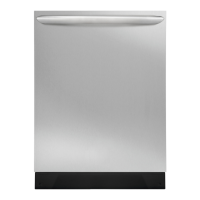
Do you have a question about the Frigidaire FGID2466QF and is the answer not in the manual?
| Style | built in |
|---|---|
| Color | stainless steel |
| Load Capacity | 14 place settings |
| Number of Cycles | 8 |
| Number of Options | 5 |
| Drying Type | saharadry®; heated & vented |
| Noise level | 52 db |
| Control Type | digital |
| Delay Start | 1 - 24 hour; yes |
| Child Lock | yes |
| Spray Arms | 3 |
| Water Filter | stainless steel; yes |
| Water Softener | no |
| Food Disposer | no |
| Sanitize Settings | yes |
| Half Load | yes |
| Wi-Fi | no |
| Water Consumption Per Cycle | 4.9 - 8.5 gallons |
| Voltage | 120v / 60hz |
| Current | 15 |
| Depth | 25 inch |
|---|---|
| Height | 33 1/2" - 35" |
| Width | 24 inch |
Guide to initial setup and operation of the dishwasher.
Details on choosing appropriate wash cycles based on soil level and load type.
Explanation of available optional features and their functions.
Information on using the sanitize function for hygienic cleaning.
How to program the dishwasher to start at a later time.
Instructions for enabling and disabling the child safety lock feature.
Explanation of console lights indicating cycle status and operation.
Description of information displayed in the status window.
How to keep console lights on during cycle operation.
Overview of available wash cycles, their intended use, options, and duration.
Steps for scraping food, loosening burned-on items, and emptying liquids before loading.
Guidance on properly placing items in the upper rack for optimal cleaning.
Details on using the upper rack for various items and its flexibility.
Instructions on how to adjust the height of the upper rack.
Guidance on properly placing items in the lower rack for optimal cleaning.
Information on using fold-down tines for flexible loading of large items.
Tips for loading silverware to ensure proper cleaning and prevent damage.
Procedure for adding or removing items after the wash cycle has started.
Instructions on how to fill the pre-wash and main wash detergent cups.
Guidance on detergent usage based on water hardness for optimal cleaning.
Importance of rinse aid for drying and spot reduction, and how to use the dispenser.
Required water pressure range for optimal dishwasher performance.
Recommended water temperature for effective dishwashing and drying.
Step-by-step instructions for removing and cleaning the glass trap.
Cleaning the exterior door with mild soap and water.
Information on self-cleaning interior and cleaning the filter area.
How to clean the overfill protector to prevent leaks or malfunctions.
How to inspect and clean the drain air gap for proper drainage.
Procedure for disconnecting and protecting the dishwasher from freezing.
Troubleshooting tips for food residue remaining on dishes after a cycle.
Solutions for common issues causing dishes to remain wet after the drying cycle.
Causes and remedies for spotting or cloudiness on glassware and flatware.
Causes and solutions for staining or discoloration of dishes and utensils.
Identifying normal versus abnormal water levels in the tub bottom.
Reasons why a wash cycle might be taking longer than usual.
Understanding and preventing etching on glassware caused by detergent or water conditions.
Troubleshooting steps for a dishwasher that fails to start or operate.
Steps to take if the dishwasher fails to drain water after a cycle.
Addressing and eliminating unpleasant odors from the dishwasher.
Instructions for cleaning hard water spots and film from dishes and the tub interior.
List of conditions and situations not covered by the appliance warranty.
Information on how to obtain warranty service and necessary documentation.
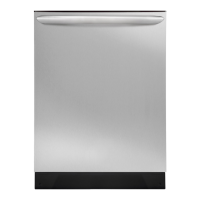
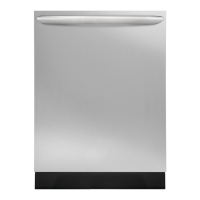
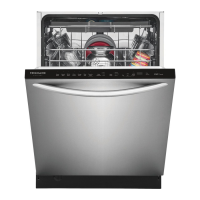
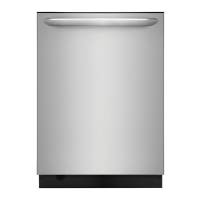
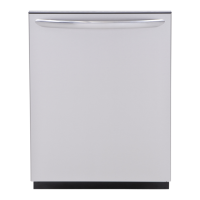
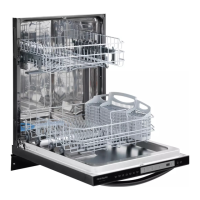
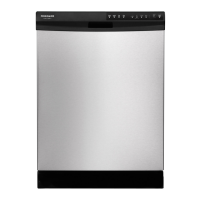
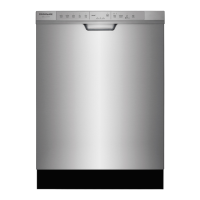
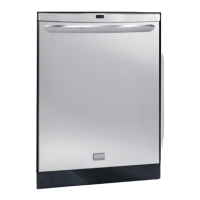
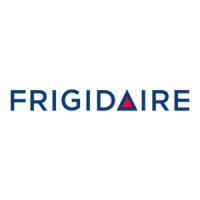
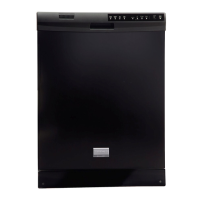
